Boat Fire Extinguisher Classes and Requirements
Boat fire extinguishers are an essential piece of boating safety equipment. While not all boats are required to carry one by law, it is highly recommended that all boaters be prepared to fight fire by equipping their boat with an appropriate fire extinguisher, just in case.
Boat fires can happen unexpectedly. While most boat fires are linked to engine fuel and other flammable liquids, electrical fires can also threaten passengers’ safety on a boat. Here we explain what you need to know about equipping your boat with the right boat fire extinguisher(s).
What types of boats require a fire extinguisher?
According to U.S. Coast Guard regulations, all boats with engines that also meet one of the following criteria must have a fire extinguisher on board:
- Boats equipped with an inboard engine
- Boats equipped with compartments that can be used to store portable fuel tanks
- Boats that feature a double bottom that isn’t sealed to the hull and isn’t fully filled with flotation materials
- Boats with enclosed living areas
- Boats that have permanently installed fuel tanks
What type of fire extinguisher do you need on your boat?
Boats do not just need a fire extinguisher on board, they need a specific type of USCG approved boat fire extinguisher to fight the types of fires that could threaten your vessel. Depending on the size of your boat, you may also need more than one fire extinguisher on board.
Types of fires
Fires are categorized according to their fuel source.
- Class A: Fires with a solid combustible fuel source like wood, plastic or cloth.
- Class B: Fires with a flammable liquid fuel source, like gasoline, alcohol or paint. This is the most common type of boat fire.
- Class C: Fires linked with an energized electrical element, or electrical fires.
Types of fire extinguishers
Each type of fire requires a different substance to put it out effectively and safely. Therefore, there are different types of fire extinguishers. Fire extinguisher classification is determined according to the fuel source of the fire: A, B or C.
- Class A: You can put these fires out with water or with a Class A fire extinguisher.
- Class B: You need a Class B fire extinguisher to extinguish a Class B fire. You cannot use water to put these fires out – water will only make the fire spread further.
- Class C: Use a Class C fire extinguisher. Never use water on an electrical fire.
- Class ABC: This type of fire extinguisher will put out all three types of fire, and is highly recommended for use on a boat.
In addition to being the right class, marine fire extinguishers must be marine-rated. You will also notice that there is a number before the class letter. This number refers to the square footage of the fire the extinguisher can put out. For example, a 5-B fire extinguisher can put out a 5 square foot, Class B fire.
Fire extinguishers can contain different types of agents, usually dry chemicals. Refer to the National Fire Protection Agency to learn more.
What determines the number of fire extinguishers on a boat?
The size of your boat, measured by the length of the hull, is what determines the number of fire extinguishers you will need on board.
- Class 1 boats (between 16 and 26 feet): one 5-B fire extinguisher
- Class 2 boats (between 26 and 40 feet): two 5-B fire extinguishers OR one 20-B fire extinguisher
- Class 3 boats (between 40 and 65 feet): three 5-B fire extinguishers OR one 20-B fire extinguisher and one 5-B fire extinguisher
For boats that are longer than 65 feet, refer to federal regulations.
Where should you store your boat fire extinguisher?
Your fire extinguisher, like your personal flotation devices, should be readily accessible at all times. If the fire extinguisher comes with a hanger or bracket, use this device to hang it safely and in plain view on your boat.
Boat fire extinguisher maintenance
Your fire extinguisher must be in good working condition. This means:
- It is charged (check the pressure gauge reading or indicator)
- The pin lock is firmly in place
- There are no visible signs of damage or corrosion and it does not appear to have been previously used
- The discharge nozzle is clean and ready for use
- The seals have not been broken
- The hose is not cracked or broken (replace it as needed)
- For dry chemical extinguishers, weigh the extinguisher to make sure it meets the minimum weight specified on the label.
You should verify that your fire extinguisher is in good working condition once a month, as part of your regular boat maintenance. Any disposable fire extinguisher that is older than 12 years must be removed from service. You can verify the age of your marine fire extinguisher by examining the date stamped on the bottle.
Important updates to boat fire extinguisher regulations
As of April 20, 2022, vessels that have a model year of 2018 and newer only need to carry 5-B or 20-B fire extinguishers. Vessels with a model year between 1853 and 2017 may be equipped with either 5-B or 20-B extinguishers, or B-I or B-II fire extinguishers.
You can find out what your boat model year is by referring to your boat hull identification number (HIN).
Learn more about the boating laws in your state with Drive a Boat USA!
Drive a Boat USA is recognized by the National Boating Law Administrators (NASBLS). Whether you’re just learning how to drive a boat or you’re ready to take a boater safety course, we can help! Sign up today to obtain your state-specific boating license.


